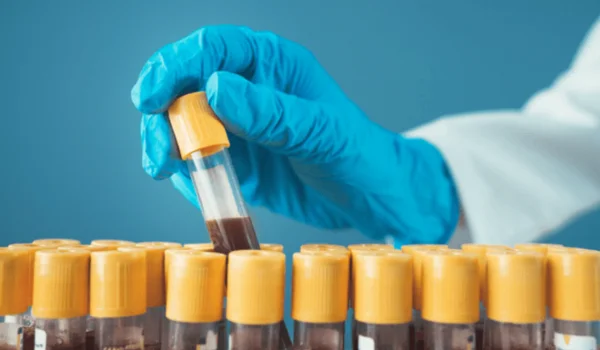Blood banks protect life. They collect and store blood components so that hospitals never run out of supplies during emergencies or routine surgeries. These facilities do more than just stack bags of blood. They need the right environment to keep it viable. And a medical deep freezer is central to that goal. It keeps plasma stable, preserves red blood cells, and shields delicate proteins from temperature fluctuations.
Many people underestimate the science behind safe blood storage. Blood is not just a thick red liquid. It holds platelets, white cells, and different proteins that lose strength if temperatures change. That is why labs, research centres, and major hospitals prefer advanced freezers designed to maintain stable temperatures around the clock.
Using regular kitchen coolers or outdated models is not an option. You need specialised machines that maintain 2°C to 6°C for refrigerated blood and around -30°C or lower for plasma storage.
Why Blood Needs Perfect Storage?

Blood starts to degrade the moment it leaves the donor’s veins. Cooling slows that process, but it does not halt it forever. Transfusion centres rely on strict guidelines to decide how long red blood cells, platelets, and plasma can be stored. Even the best equipment cannot store them indefinitely, but the right conditions prolong the time they stay usable.
If a blood component is stored in a poorly insulated cooler, its temperature can fluctuate each time the lid is opened. Over a week or two, that fluctuation saps the life out of red cells or breaks down clotting factors in plasma. By the time a patient needs it, it might no longer meet safety standards. A top-grade medical deep freezer tackles this problem by keeping a consistent cold environment, sometimes without direct power.
Deep Freezers vs. Standard Lab Freezers
Labs use refrigeration for various reasons, from storing reagents to preserving DNA samples. However, the needs of a blood bank differ from typical research labs. Here’s a look:
| Feature | Medical Deep Freezer | Standard Lab Freezer |
| Temperature Range | Often goes as low as -30°C or below | May hover around -20°C to -40°C |
| Backup Support | Long hold times in power cuts | May have shorter backup features |
| Regulatory Focus | Built to meet strict blood safety guidelines | Often oriented toward research standards |
| Primary Purpose | Preserves plasma and blood components | Stores chemicals, enzymes, or general samples |
Both categories help maintain low temperatures, but blood banks usually stick to machines with extra safety measures, better monitoring, and a narrower temperature band.
Meeting Plasma Preservation Standards
Plasma is rich in proteins like albumin and clotting factors that can treat burns, trauma, or bleeding disorders. But these proteins break down fast if the freezer fails. Specialists set the bar high: freeze plasma at -30°C or colder to retain function. If the temperature goes upward, quality drops. That is one reason many facilities get anxious about even short power cuts.
Some deep freezers incorporate technology that keeps them cold for days without a constant power supply. They rely on special coolant or robust insulation to hold temperatures stable. That could be a lifesaver for a remote clinic facing daily load shedding. The staff can collect plasma from local donors, freeze it properly, and ship it to a bigger hospital without losing quality.
The data-logging systems in these freezers also help everyone stay on the same page. If a nurse during the night shift sees an alarm, they can fix the problem or call maintenance.
Supervisors can review logs later to spot any pattern of temperature fluctuations or door openings. This level of detail ensures the plasma stays in top shape until it reaches a patient who needs it.
Different Capacities for Different Needs
Blood banks vary in size. A small rural centre might handle 50 units a week. A big metropolitan hospital might store thousands of units monthly. Equipment manufacturers meet these needs by offering freezers in multiple sizes, ranging from a compact 57.7-litre model to a hefty 579-litre version. Some come with integrated alarm systems, while others have advanced chart recorders and digital displays.
A 57.7-litre option might fit a small clinic. It holds stable temperatures for over eight days, which is excellent for places where electricity is unreliable. Mid-range models, around 239 litres, from premium suppliers like Godrej include robust cooling, four-alarm systems, and a user-friendly interface. Larger 579-litre solutions can serve major facilities that rotate large blood stocks daily.
But capacity is not the only factor. You also want to check the warranty. Many freezers come with a two-year standard warranty, giving you confidence that the machinery can handle day-to-day challenges. Some even include adjustable shelves for flexible storage.
Conclusion
Blood banks do more than just store blood. They save lives by maintaining quality units around the clock. Without the right freezer system, much of that blood would spoil before reaching a patient in need. That is where a medical deep freezer shows its worth. It keeps conditions stable, prevents waste, and ensures no family has to wait because of a storage failure.
In an ever-changing healthcare environment, investing in technology that’s both robust and future-proof is essential. Whether it’s small lab freezers for clinics or large-scale deep freezers for major hospitals, each piece of equipment must meet exact standards. When chosen well, these freezers remove worries about temperature swings or power blackouts.

